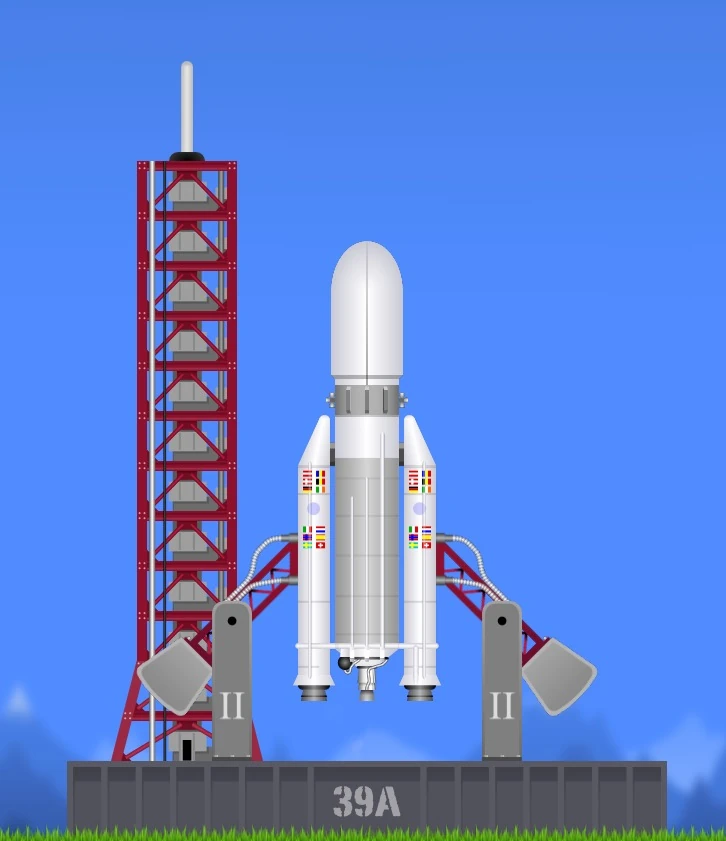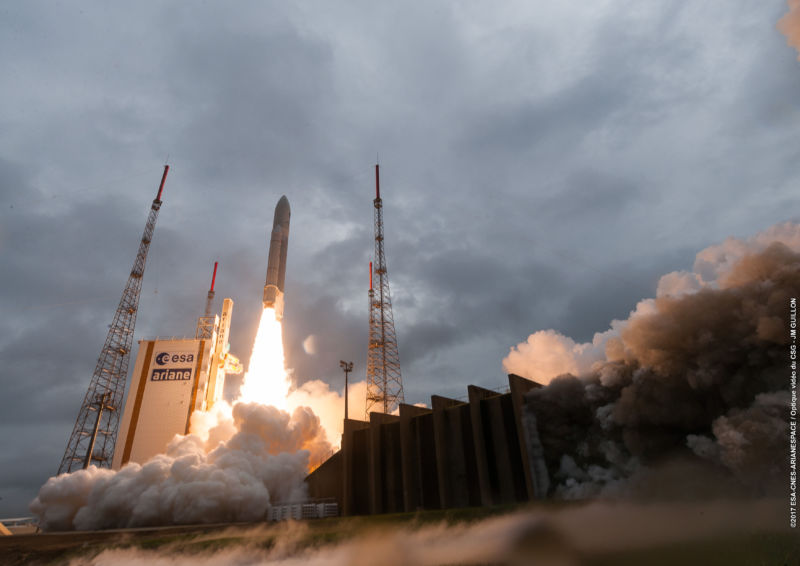고정 헤더 영역
상세 컨텐츠
본문


After a short three-month break between flights, Arianespace returned to action with the launch of two telecommunications satellites in TIBA-1 and Inmarsat GX5 on an Ariane 5 rocket. Liftoff from Ariane Launch Complex No. TIBA-1 SatelliteThe civil and governmental communications satellite will be stationed at the 35.5 deg East longitude orbital slot position following its deployment by Ariane 5 and will provide communications services to the country of Egypt via a Ka-band payload. The spacecraft’s estimated mass at liftoff is 5,600 kilograms (12,346 pounds).TIBA-1 was designed with a lifetime of over 15 years on orbit. The satellite will be the 4th such spacecraft launched by Arianespace for Egypt, the 127th Airbus satellite launched by Arianespace, and the 160th launch by the company for Thales Alenia Space.Meanwhile, the Inmarsat GX5 spacecraft, which is Inmarsat’s latest and most-advanced Ka-band Global Express (GX) satellite, was located inside the SYLDA – the Ariane 5’s secondary payload adapter that can also house another spacecraft inside during flight. It was the second and final payload deployed during this mission.

Ariane 5 User Manual Issue 5 For Sale
Inmarsat GX5Inmarsat GX5 was built by Thales Alenia Space for Inmarsat, the British satellite telecommunications company that provides telephone and data services to users worldwide. The spacecraft is the fifth in the GX satellite fleet, which has enabled seamless, mobile broadband services to become available to customers.See Also.Once it is launched to its assigned orbital slot position at 11 deg. East longitude, Inmarsat GX5 will deliver greater capacity than the entire existing GX fleet (GX1-GX4) combined, with 72 Ka-band fixed spot beams and 4 steerable beams providing communications services to those in Europe and the Middle East.The spacecraft marks the start of an enhancement in the overall capacity and capabilities of the GX satellite network, with seven more advanced GX payloads scheduled to launch over the next four years.Inmarsat GX5 is based on the Spacebus 4000B2 satellite platform and has an estimated launch mass of 4,007 kilograms (8,834 pounds).
Ariane 5 Failure
The satellite has an on-orbit lifetime of over 16 years.Inmarsat GX5 was the 10th Inmarsat spacecraft launched by Arianespace, and the first since Inmarsat S-EAN successfully flew on an Ariane 5 on June 28, 2017. It is also the 161st spacecraft launched by Arianespace for Thales Alenia Space.Ariane Flight VA250 will likely be the last Ariane 5 launch of the year for Arianespace, with the next flight scheduled for no earlier than January with two more satellites in Eutelsat Konnect BB4A and GSAT-30.Arianespace’s launch manifest for the end of 2019 includes a multi-satellite rideshare mission on a Soyuz-ST launcher, with the European Space Agency’s CHEOPS space telescope serving as the primary payload. The mission is currently scheduled to launch no earlier than December 17th from the Soyuz Launch Complex (ELS) at the European Spaceport.




